Two crested grebes, with sly, sliding eyes, prick up the feathers on their heads and launch into a pecking, waterborne dance of what? Mating? Rivalry? I could not tell. An angry moorhen abandons its ambition to salvage an old flannel to bounce a coppery duck from its territory. A swan sits one pale jade egg beneath the Bains des Pâquis pier from which the unclothed descend to bathe after their sauna. This is Lake Geneva, and I am birdwatching in the very middle of one of the world's most cosmopolitan and unusual cities.
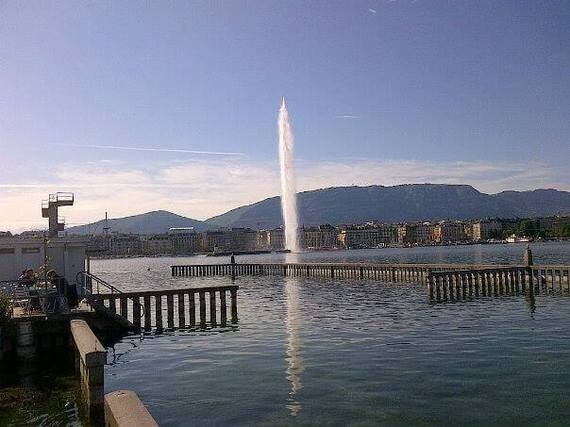
The fountain at Lake Geneva
Deep within Lake Geneva flows the distinct body of water that is the river Rhone. It takes an extraordinary ten years for the river to move through the bow-shaped lake and pour like liquid from a jug down the map of France to the Mediterranean. Contemplating this fact, while bobbing about on one of the charming and unfeasibly young Balthazar's fleet of little boats, was just one of Geneva's varied and subtle pleasures. I declined to fish, but people lift giant pike and fera, a strictly local trout variant, all the time from these pristine waters, which are then cooked for them by the local chefs.
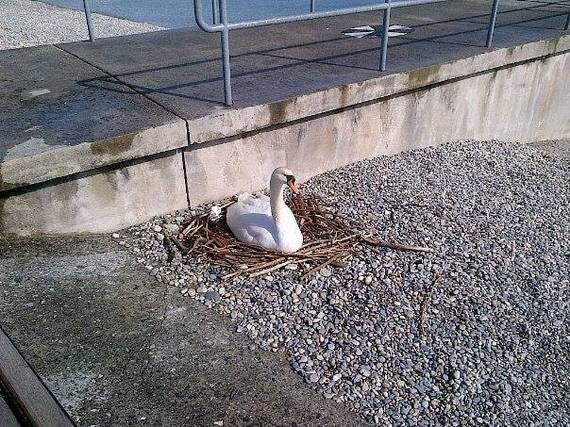
A swan raises a family, unconcerned and Centre Ville
The lake dominates. It is everywhere you look, glimpsed between buildings, beside you always as you walk through the city. It give the city a unique flavour of openness to the sky. There is nothing crowded here, the city is dwarfed by the sheer immensity of water that lies within its bounds.
Of all the cities I have written about, the one that Geneva reminds me of most is Hong Kong. Getting out onto the water is crucial for getting a perspective of both cities, but there is a crucial difference. Hong Kong is all about the shock of the new, buildings torn down and thrown up every moment. Geneva is more about the slow accretion of significant history. A place of peace and plenty for so many generations, benevolent institutions such as the Red Cross and Crescent, the League of Nations and more, are sited in large imposing buildings across a green landscape spreading up into the hills.
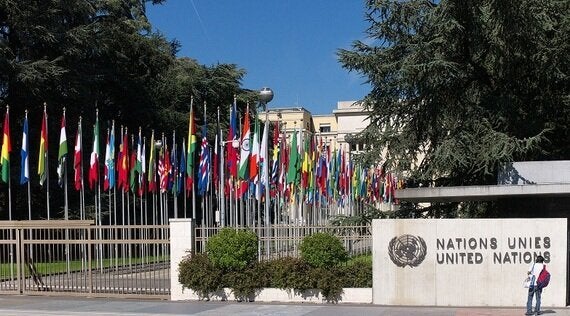
The nature of Geneva is unique in my experience. For a place of such sophistication, it is completely unspoilt. It feels like stepping back into a kinder past, where things go more slowly, the shops jolly well shut sometimes, the streets are not full, no one hassles you and the amenities have an old-fashioned, rather tentative charm that I wasn't expecting at all. Goodness I enjoyed it. This is place to come for the weekend if you are a bit sick of the brash bustle of modern life, or the self-consciously preserved 'heritage' and over-familiar sights, of other famous weekend cities. Characteristic is the fact that there is no forcing you to exit through the Gift Shop at the Museum of Heritage and Art, because there is not gift shop at all.
Popping over for the weekend, just an hour and a half from Heathrow, may seem like a very odd thing to do. Geneva is a business place; or a place where the world's great and good arrive in silent limousines to decide things for the rest of us, via organisations like the World Bank and the UN. Not a place for frivolling or topping up your reservoirs of culture from the pleasurably unfamiliar feast available.
The lake is a given like the canals in Venice. The closest I have come to this feeling before is Hong Kong Harbour, but that feverish morphing city is different to this timeless one. Everyone potters back and forth across the lake on little yellow boat buses, taking shortcuts from one side to the other. The sheet of water is so big that is room for a full scale yacht race without impeding anyone else's sea room. The buildings face into the water, look across it, are lit by the sunlight reflected on its surface. You cannot help but be aware of the mountains beyond, the source of all the water, and on a clear day Mont Blanc, white as its name, is visible in the distance. The 140 metre high fountain punctuates the surface, an exciting sight as the changeable wind sculpts it into a sail. Originally it has a practical, hydro use to relieve pressure, but then the City fathers noticed that visitors liked to see it, so they moved it in closer to the city where it is now.
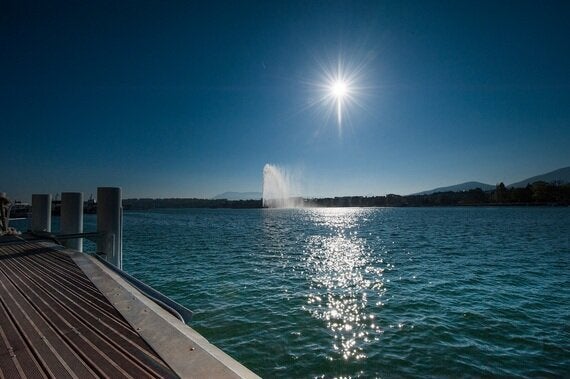
On a pier stretching out into the lake is a truly interesting venue which I urge you to visit. In fact you cannot really avoid it. At one end there is a miniature lighthouse, and along its modest length are low buildings housing a café and a spa. I was expecting, rather wearily, the kind of tinkly 'new age' music, bland girls in smocks and wafting aromatherapy, but thank goodness it is not like that at all. Plain and simple, it is there to improve wellbeing and it does that without fuss and with great friendliness. Patrick is certainly not a bland girl. Rather he is a rugged life guard and naturalist with an interest in the local hares who practices Shiatsu in a room panelled like a sauna. You keep your clothes on, which for this modest Englishwoman was a great relief. Lying on a mattress on the floor, I had my limbs and body manipulated to excellent effect. Even my ears came in for a massage, which felt marvellous. Set me up for a day of exploration within and around the city.
If you are after the tiny intricate fascinations of analogue watches or the deliciousness of chocolate, it is best to set out on these quests on Saturday, as on Sunday things do rather close down. I do love cars and I was invited by Elite Motors to test drive a Tesla sports car on the challenging twisty roads above the city. First we had a look in the boot, where there was a battery and a giant plug. We got in and moved off, silently, past the grand and important outsize institutions, breaking the bounds of the city very quickly to move up into flowering hills. A sweet clean cow smell pours into the open car and the verges are embroidered with white, blue and yellow flowers. Acceleration is immediate and extraordinary because there is no transmission. This is how driving will be for all of us very soon. Hold on to your hats.

The Tesla we drove up into the mountains - the future of motoring
While we were up there, we had a look at the river Rhone, free from its beguiling home in the Lake and flowing fast towards France. We ate lunch at the Café de Peney. It shares with the rest of Geneva this satisfyingly timeless, unfussed quality. The food was superb - white European-style asparagus and veal kidney, both simply and perfectly prepared.
Back in town, I walked along the lakeshore once more to admire Geneva's answer to the Albert Memorial - built to commemorate a 19th century Duke of Brunswick, who left his enormous fortune for a grand funeral and this reproduction of the Scaligeri mausoleum in Verona to be built. Eventually it was sited in the Jardin des Alpes, after heated debate among the city fathers who had never heard of such a thing before.
Behind it lies the Cottage Cafe, a little bothy built by the craftsmen who made the memorial, and somehow not removed afterwards. It was restored quite recently and turned into a popular restaurant, on a warm evening everyone eats the tapas like menu outside, or in the charming interior with its fairy lights and books. I tried smoked fera from the lake, with salad, and some delicious roasted veg, all washed down with Swiss wine. It never comes here, but it is very good, dry and flinty, made from grapes grown close to Geneva. You should not drink anything else while you are there.
Then it was time for bed at the trendy N'vy Hotel. Super modern with achingly hip artworks, and not a 21st century trope left neglected, it is also extremely comfortable and friendly. My room had a terrace that looked out over - you've guessed it - the lake.
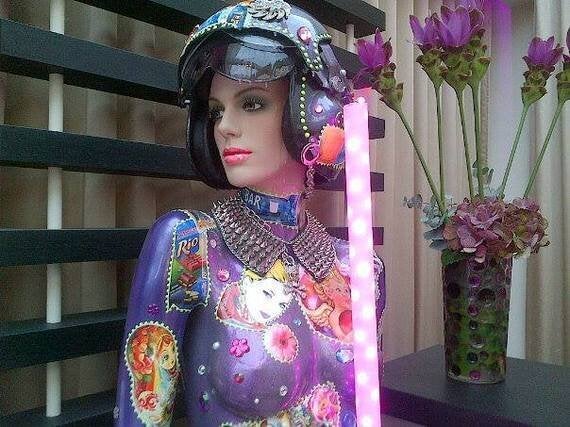
A lady adorning the bar at the Hotel N'vy
Sunday was sunny and warm, perfect for the city walk that I was planning. I took Route 1 in the little yellow boat bus, and walked up into the Old Town, navigating by the cathedral tower. Geneva of course is the cradle of the Reformation, and the inside of the cathedral is stripped bare of popish decoration, plain, austere and beautiful. I made a slightly queasy trip up the tower, which is worth it for the view down over the lake and to the countryside beyond.

The Cathedral of St Peter, an intriguing combination of architectural styles
There are 40 museums in Geneva, four of them unique, and you will need to pick your favourite stuff and focus on that as you would never manage more than one or two so rich is the cultural heritage of the city. I popped into the Museum of the Reformation, a far from solemn affair, which amused me greatly by having in the garden one of those figures with the face cut out for funny photographs. Only this one was a blown up engraving of Calvin, the great man himself. Inside, my favourite things were Hieronymous Bosch style Catholic propaganda paintings of Luther and Calvin being transported down to hell. The great reformers don't look at all bothered, mounted on skeletal bird monsters, and surrounded by cheerful looking demons. Sadly I can't find an image of them anywhere, and there were no postcards.
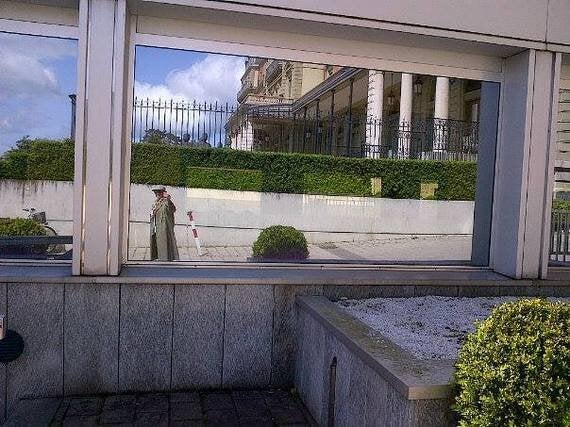
I feel like an old school spy as I slip between the old League of Nations building and the modern Hotel President Wilson, the American president who was moving spirit of the League after WWI.
I wandered through the quiet, clean, rather austere stone canyons of the old city, to the huge and interesting Art and History Museum. Stuffed with unfamiliar works by familiar names, it is my favourite kind of museum with a bit of this (Etruscan art, Egyptian mummy cases) and a bit of that - a chronologically arranged but delightfully random collection of European paintings, which included unsung masterpieces by everyone from Hoppner, Raeburn and Hogarth to Monet and Renoir. One of my favourites was a gorgeous composition called The Prettiest Girl in Paris, by Tissot, that chronicler of naughty 19th century girls. Most fascinating was a self-portrait by Giacometti, and I enjoyed discovering a local artist called Hodler. There is a wall of his self-portraits from youth to late middle age, when he died. Opposite, on a grassy mound, is a fine Henry Moore. The whole place was deserted too, I had the loveliness on display all to myself.
Back down by the lake shore, it was imperative to eat at the Café du Centre. Established in 1724, it is completely timeless. The staff, in long white aprons, were rather firm and practical, the atmosphere Edwardian, the seafood delicious, washed down with more flinty Swiss white wine.
So go. It is a bargain minibreak where everything is of the highest possible quality, from the art to the food and the atmosphere. They really want you to, and offers galore will stretch your Swiss francs. For instance the Geneva pass is free with your hotel room. I loved it, and have barely touched what is on offer, so will go again soon to see the ceramic museum, the Red Cross museum and more, and maybe fish my own dinner out of the lake this time.
INSIDER KNOWLEDGE
For a lake tour, wakeboarding or fishing try Balthazar of Geneva Boats.
I dug out a rather outstanding value weekend offer for Geneva - how can you resist? From 56 Swiss Francs a night including the Geneva Pass
I stayed at the Hotel N'vy highly recommended.
You can even win a weekend, which is likely to include a great deal of chocolate, by playing the game.
To hire rather special cars, go to Elite Rent , I was chauffeured by the charming and very handsome Jakub Hanus - demand no less.